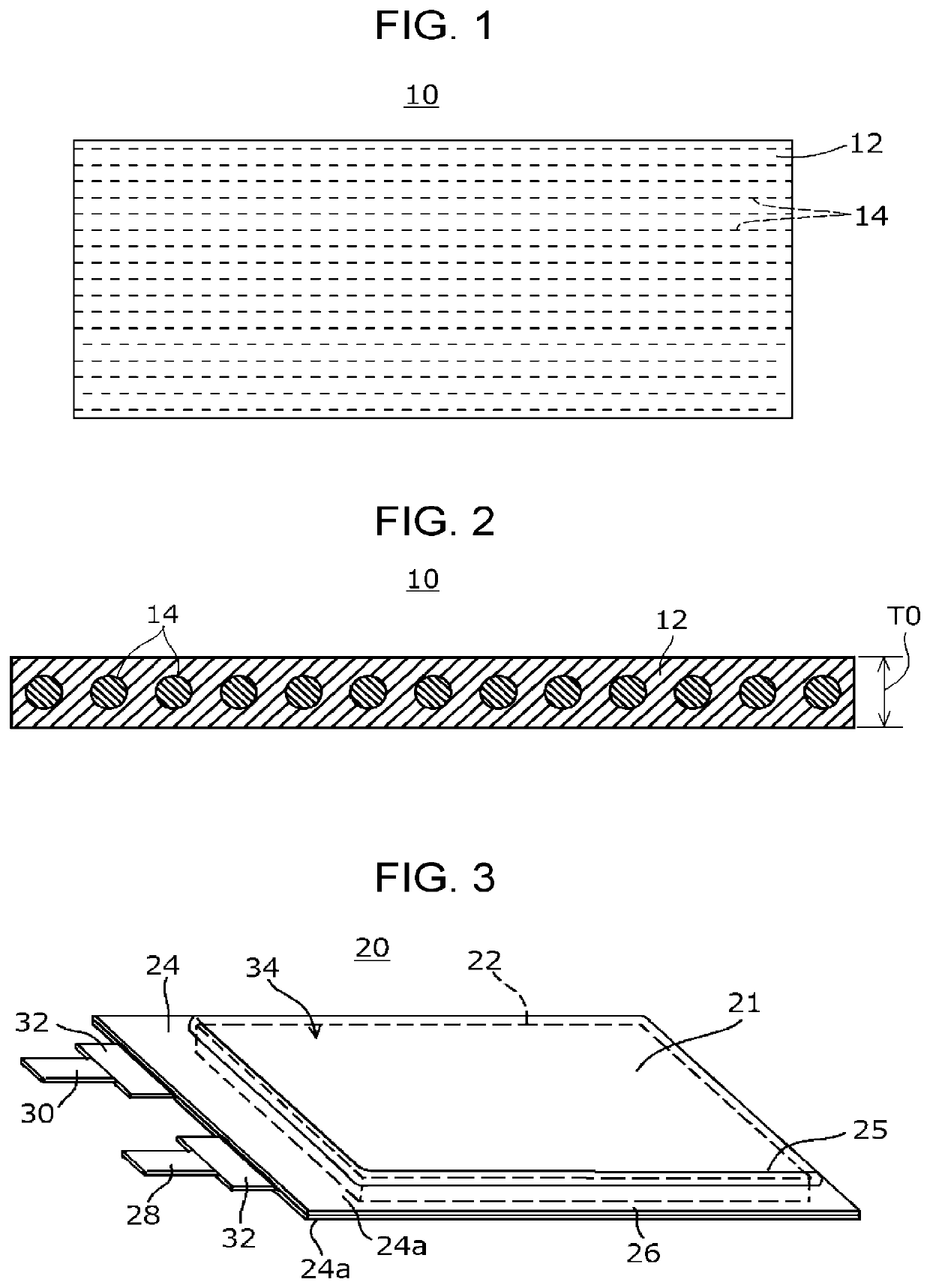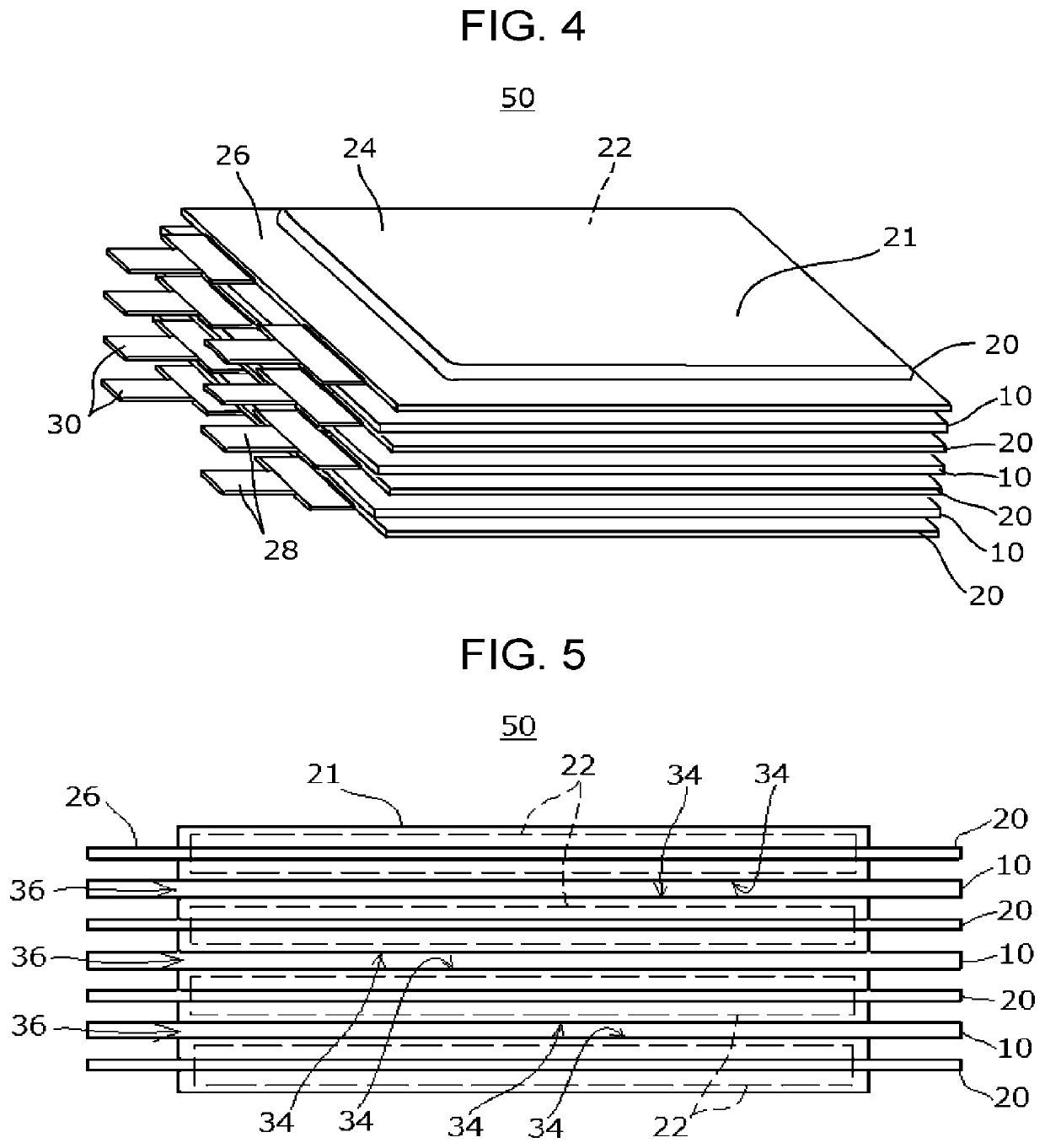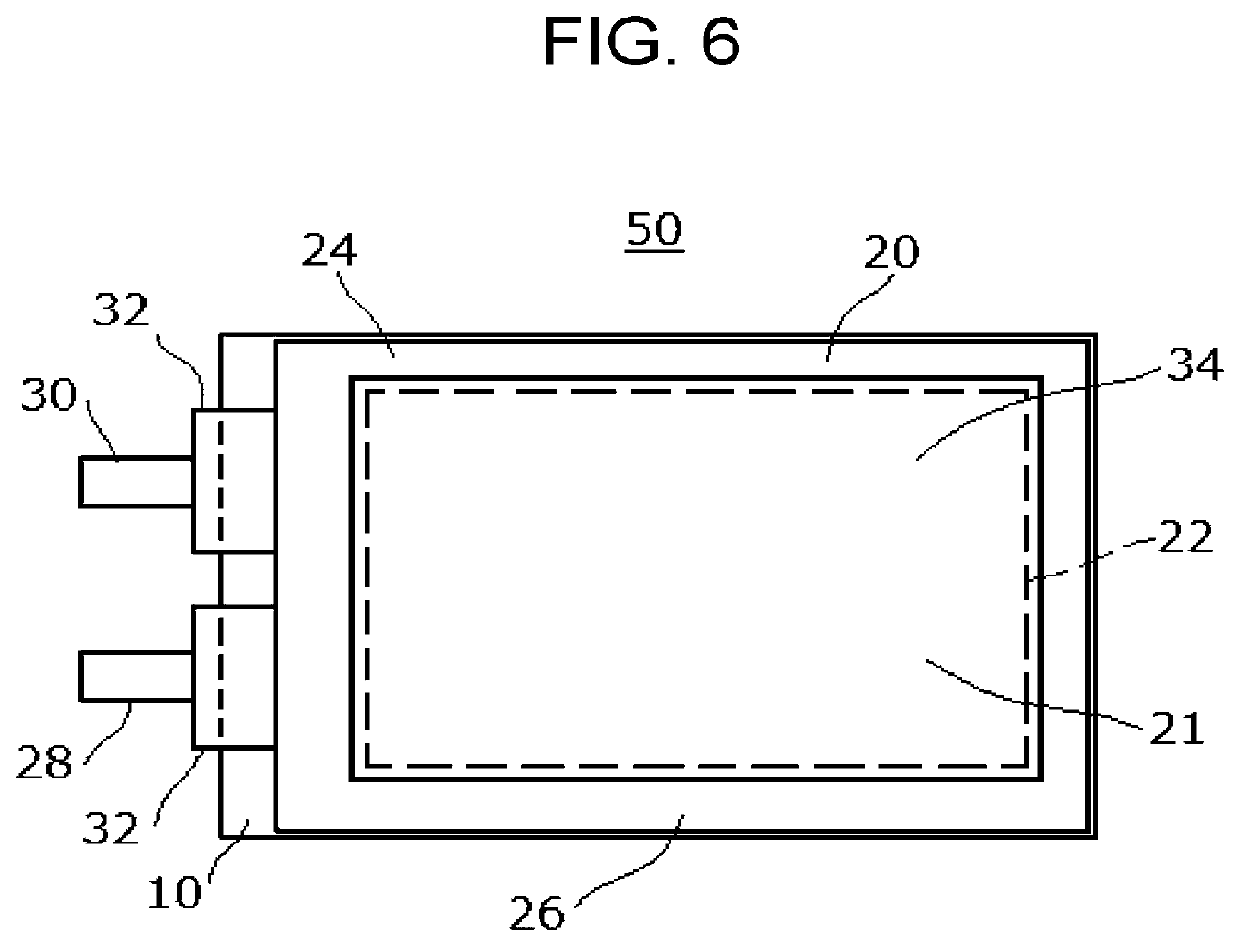Insulating sheet and assembled battery
a technology of assembled batteries and insulation sheets, which is applied in the direction of battery isolation, cell components, electrical equipment, etc., can solve the problems of increasing mass, difficult to control the thickness of resins to be uniform, and difficult to fill, so as to achieve the effect of improving the safety of assembled batteries, and reducing the amount of material used
- Summary
- Abstract
- Description
- Claims
- Application Information
AI Technical Summary
Benefits of technology
Problems solved by technology
Method used
Image
Examples
examples
[0060]The present invention will be described in more detail on the basis of examples. However, the present invention is not limited to these examples. Note that a thermal runaway propagation test was carried out as follows.
[0061](Thermal Runaway Propagation Test)
[0062]As a battery cell, an in-house fabricated laminate type lithium-ion battery cell with a size (including a peripheral portion 26) of 140 mm in length, 55 mm in width, and 4.5 mm in thickness and a cell capacity of 3 Ah was used. A silicone rubber heater (SBH2012, 25×50 mm) manufactured by Hakko Electric Co., Ltd. was attached to an outer layer of a battery cell disposed at the lowest end of four battery cells. Then, an insulating sheet was disposed between each of adjacent battery cells, and an assembled battery having insulating sheets disposed therein was obtained.
[0063]The silicone rubber heater was heated to 200° C. or higher by applying a voltage of 100 V. The battery in contact with the heater was defined as a he...
examples 1 to 3
[0064]A resin composition having an inorganic filler content of 65% by mass was prepared using a urethane resin (trade name: EIMFLEX EF-243, manufactured by DKS Co., Ltd.) as a resin component, and aluminum hydroxide (C-310 manufactured by Sumitomo Chemical Co., Ltd.) as an inorganic filler. Furthermore, as a fiber reinforcing material, a glass fiber base formed of glass rovings (manufactured by Daiso Chemical Co., Ltd, multi-end roving, Item No. “ER550E-2400”) was used.
[0065]Using the resin composition and the fiber reinforcing material, three types of insulating sheets, with a thickness of 3.0 mm (Example 1), 2.0 mm (Example 2), and 1.0 mm (Example 3), were produced by pultrusion (speed 6 cm / min, heating temperature 130° C.). The insulating sheets had a structure in which, as shown in FIGS. 1 and 2, a fiber reinforcing material obtained by arranging glass rovings in parallel was embedded. The arrangement interval of the glass rovings was set to be 15 rovings per a width of 10 mm i...
examples 4 to 6
[0068]The same resin composition as that of Examples 1 to 3 was used, and as a fiber reinforcing material, a polyester fiber base formed of polyester yarns (manufactured by Gunze Limited, Gunze Stitch, Item No. “K5”) was used. As in Examples 1 to 3, three types of insulating sheets, with a thickness of 3.0 mm (Example 4), 2.0 mm (Example 5), and 1.0 mm (Example 6), were produced. In the polyester fiber base, yarns obtained by twisting a plurality of polyester yarns were arranged in parallel, and the arrangement interval thereof was set to be, in terms of number of polyester yarns (i.e., yarns before being twisted), 88 yarns per a width of 10 mm in Example 4, 58 yarns per a width of 10 mm in Example 5, and 37 yarns per a width of 10 mm in Example 6. Using the insulating sheets of Examples 4 to 6, the thermal runaway propagation test was carried out as in Examples 1 to 3. The results thereof are shown in Table 1.
PUM
| Property | Measurement | Unit |
|---|---|---|
| storage elastic modulus | aaaaa | aaaaa |
| particle size | aaaaa | aaaaa |
| particle size | aaaaa | aaaaa |
Abstract
Description
Claims
Application Information
 Login to View More
Login to View More - R&D
- Intellectual Property
- Life Sciences
- Materials
- Tech Scout
- Unparalleled Data Quality
- Higher Quality Content
- 60% Fewer Hallucinations
Browse by: Latest US Patents, China's latest patents, Technical Efficacy Thesaurus, Application Domain, Technology Topic, Popular Technical Reports.
© 2025 PatSnap. All rights reserved.Legal|Privacy policy|Modern Slavery Act Transparency Statement|Sitemap|About US| Contact US: help@patsnap.com



